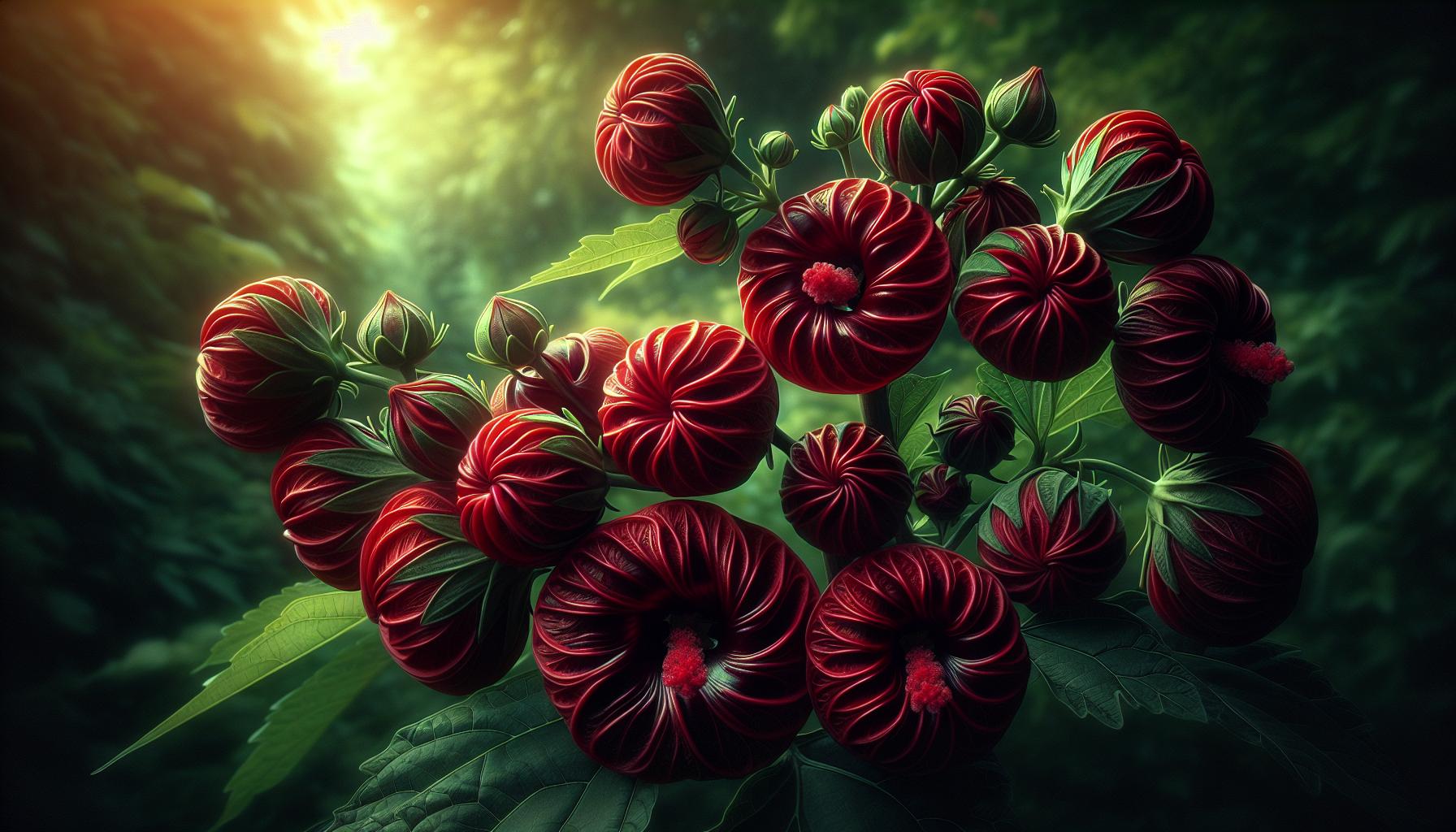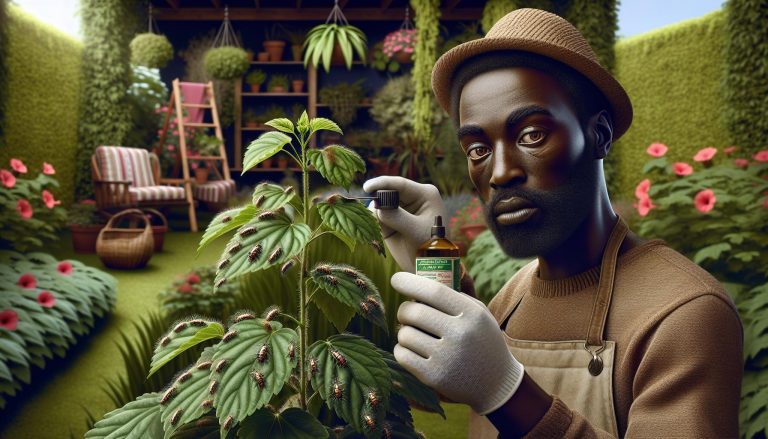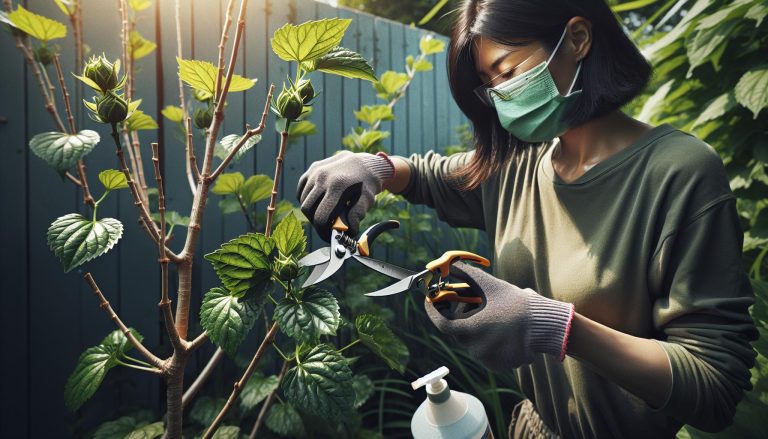Hibiscus Sabdariffa: Health Benefits, Cultivation, and Precautions
Have you ever sipped a vibrant, ruby-red tea with a tangy flavor that instantly refreshes your senses? You might’ve encountered Hibiscus sabdariffa, a remarkable plant that’s been captivating taste buds and intriguing health enthusiasts for centuries.
I’ve always been fascinated by the versatility of this tropical marvel. From its use in traditional medicine to its popularity in culinary circles, Hibiscus sabdariffa has a rich history and an even more promising future. But what makes this plant so special? Is it just a pretty flower, or does it hold secrets that could benefit our health and well-being?
What Is Hibiscus Sabdariffa?
Hibiscus sabdariffa is a flowering plant species in the mallow family, Malvaceae. It’s cultivated for its colorful calyces, leaves, and seeds, which have various culinary and medicinal uses.
Origin and Botanical Classification
Hibiscus sabdariffa originates from Africa, specifically the area spanning from Egypt to Senegal. It’s an annual or perennial herb that grows up to 8 feet tall. The plant belongs to:
- Kingdom: Plantae
- Order: Malvales
- Family: Malvaceae
- Genus: Hibiscus
- Species: H. sabdariffa
Its large leaves are deeply lobed, and the flowers are typically pale yellow with a dark red spot at the base of each petal. The most distinctive feature is the fleshy, bright red calyx that surrounds the seed capsule.
Common Names and Varieties
Hibiscus sabdariffa goes by several common names across different cultures:
- Roselle
- Jamaican sorrel
- Red sorrel
- Florida cranberry
- Bissap (in West Africa)
- Karkade (in Egypt and Sudan)
Two main varieties of Hibiscus sabdariffa are cultivated:
- Hibiscus sabdariffa var. sabdariffa: This variety is grown for its edible calyces.
- Hibiscus sabdariffa var. altissima: Cultivated for its fiber, known as Kenaf.
The sabdariffa variety is further divided into types based on calyx color:
- Green
- Red
- Dark red
Each variety has slightly different flavors and uses in culinary applications. The red varieties are most commonly used for tea and other beverages due to their vibrant color and tart flavor.
Nutritional Profile of Hibiscus Sabdariffa
Hibiscus sabdariffa packs a powerful nutritional punch. Its calyces, leaves, and seeds offer a diverse array of vitamins, minerals, and antioxidants that contribute to its health-promoting properties.
Key Vitamins and Minerals
Hibiscus sabdariffa is a nutrient-dense plant, rich in essential vitamins and minerals:
- Vitamin C: 100g of hibiscus calyces contain 14mg of vitamin C, boosting immune function and collagen production.
- Calcium: Hibiscus leaves provide 215mg of calcium per 100g, supporting bone health.
- Iron: With 3.3mg of iron per 100g, hibiscus helps prevent anemia and supports oxygen transport.
- Magnesium: 100g of hibiscus calyces offer 51mg of magnesium, crucial for muscle and nerve function.
- Potassium: Hibiscus contains 208mg of potassium per 100g, aiding in blood pressure regulation.
| Nutrient | Amount per 100g |
|---|---|
| Vitamin C | 14mg |
| Calcium | 215mg |
| Iron | 3.3mg |
| Magnesium | 51mg |
| Potassium | 208mg |
These nutrients contribute to hibiscus’s overall health benefits, including cardiovascular support and immune system enhancement.
Antioxidant Properties
Hibiscus sabdariffa is renowned for its high antioxidant content:
- Anthocyanins: These potent antioxidants give hibiscus its vibrant red color and offer anti-inflammatory benefits.
- Flavonoids: Hibiscus contains quercetin and kaempferol, which protect cells from oxidative stress.
- Polyphenols: These compounds, including protocatechuic acid, help combat free radicals in the body.
The antioxidant capacity of hibiscus is comparable to that of blackberries and strawberries. A study published in the Journal of Agricultural and Food Chemistry found that hibiscus extract exhibited higher antioxidant activity than green tea.
Hibiscus’s antioxidant properties contribute to its potential in:
- Reducing blood pressure
- Supporting liver health
- Promoting skin health
- Aiding in weight management
Regular consumption of hibiscus tea or incorporating hibiscus into your diet can help harness these antioxidant benefits. However, it’s essential to consult with a healthcare professional before using hibiscus for medicinal purposes, especially if you’re on medication or have pre-existing health conditions.
Health Benefits of Hibiscus Sabdariffa
Hibiscus sabdariffa offers a range of health benefits backed by scientific research. Its potent compounds contribute to various aspects of well-being, from cardiovascular health to metabolic function.
Cardiovascular Health Support
Hibiscus sabdariffa plays a crucial role in supporting heart health. Studies show it helps lower blood pressure in hypertensive individuals. The anthocyanins in hibiscus reduce the risk of atherosclerosis by preventing the oxidation of LDL cholesterol. Regular consumption of hibiscus tea may improve lipid profiles, decreasing total cholesterol and triglyceride levels while increasing HDL cholesterol.
Potential Weight Management Aid
Hibiscus sabdariffa extract shows promise as a natural weight management supplement. It inhibits the production of amylase, an enzyme that breaks down carbohydrates and starches. This action may lead to reduced calorie absorption and improved weight control. Additionally, hibiscus helps regulate leptin levels, a hormone that controls appetite and metabolism.
Antidiabetic Properties
The antidiabetic effects of Hibiscus sabdariffa are gaining attention in the medical community. Research indicates it can help lower blood glucose levels and improve insulin sensitivity. Hibiscus polyphenols inhibit carbohydrate-digesting enzymes, potentially reducing post-meal blood sugar spikes. Regular consumption may also protect pancreatic beta cells, promoting better glucose regulation in diabetic individuals.
Traditional and Modern Uses
Hibiscus sabdariffa, known for its vibrant calyces, has a rich history of use in various cultures. Its versatility extends from culinary applications to medicinal and cosmetic uses.
Culinary Applications
Hibiscus sabdariffa’s tart flavor makes it a popular ingredient in many cuisines:
- Teas: Steep dried calyces for a refreshing, ruby-red beverage
- Jams and jellies: Use as a pectin-rich base for spreads
- Sauces: Add to savory dishes for a tangy kick
- Salads: Incorporate fresh calyces for color and flavor
- Desserts: Use in sorbets, ice creams, and baked goods
In Mexico, “agua de jamaica” is a beloved hibiscus-infused drink. Caribbean countries often use hibiscus in festive punch recipes.
Medicinal Uses
Traditional medicine has long valued Hibiscus sabdariffa for its therapeutic properties:
- Blood pressure management: Studies show potential in reducing hypertension
- Digestive aid: Used to soothe stomach discomfort and aid digestion
- Fever reducer: Traditionally used to lower body temperature
- Diuretic: Helps increase urine production and flush toxins
- Antioxidant boost: Rich in compounds that combat oxidative stress
Modern research supports many of these traditional uses, particularly its cardiovascular benefits. However, consult a healthcare professional before using hibiscus medicinally.
Cosmetic and Skincare Uses
Hibiscus sabdariffa’s benefits extend to skincare and beauty applications:
- Natural exfoliant: Alpha-hydroxy acids gently remove dead skin cells
- Anti-aging: Antioxidants help combat signs of premature aging
- Moisturizer: Mucilage content provides hydration to the skin
- Hair care: Used in shampoos and conditioners for shine and strength
- Lip products: Adds color and moisturizing properties to lip balms
Many natural skincare brands now incorporate hibiscus extract in their formulations. Its gentle yet effective properties make it suitable for various skin types.
Cultivation and Harvesting of Hibiscus Sabdariffa
Hibiscus sabdariffa thrives in specific conditions and requires careful attention during cultivation and harvest. I’ll share insights on growing this versatile plant and the best practices for harvesting its prized calyces.
Ideal Growing Conditions
Hibiscus sabdariffa loves warmth and sunlight. It grows best in:
- Full sun exposure (6-8 hours daily)
- Well-draining, loamy soil with pH 6.0-7.5
- Temperatures between 60-80°F (15-27°C)
- Moderate humidity levels
To cultivate Hibiscus sabdariffa:
- Start seeds indoors 4-6 weeks before the last frost
- Transplant seedlings outdoors after frost danger passes
- Space plants 3-4 feet apart in rows
- Water regularly, keeping soil moist but not waterlogged
- Fertilize monthly with a balanced, organic fertilizer
Tip: In cooler climates, grow Hibiscus sabdariffa in containers to extend the growing season.
Harvesting and Processing Techniques
Timing is crucial when harvesting Hibiscus sabdariffa. Here’s how to do it right:
- Harvest calyces 10-15 days after flowering
- Pick in the morning when temperatures are cool
- Cut the entire calyx at the base, leaving a small stem attached
- Collect only fully developed, bright red calyces
Processing steps:
- Remove seeds from calyces immediately after harvesting
- Rinse calyces gently in cool water
- Dry calyces in a well-ventilated area or use a food dehydrator
- Store dried calyces in airtight containers in a cool, dark place
| Drying Method | Temperature | Time |
|---|---|---|
| Sun drying | Ambient | 3-5 days |
| Oven drying | 135°F (57°C) | 6-8 hours |
| Dehydrator | 115°F (46°C) | 12-24 hours |
Remember: Properly dried calyces should be crisp and brittle, with a deep red color.
Potential Side Effects and Precautions
While Hibiscus sabdariffa offers numerous health benefits, it’s crucial to be aware of potential side effects and take necessary precautions. Here’s what you need to know:
Interactions with Medications
Hibiscus can interact with certain medications, potentially affecting their efficacy or causing adverse reactions:
- Blood pressure medications: Hibiscus may enhance the effects of these drugs, leading to excessively low blood pressure.
- Diabetes medications: It might lower blood sugar levels, requiring dose adjustments for diabetic patients.
- Acetaminophen: Hibiscus may increase the rate at which the body removes this pain reliever.
- Chloroquine: The herb can decrease the effectiveness of this antimalarial drug.
Always consult a healthcare professional before consuming hibiscus if you’re taking any medications.
Recommended Dosage and Consumption
To enjoy the benefits of Hibiscus sabdariffa safely:
- Tea: 1-2 cups daily, using 1.5 to 2 grams of dried hibiscus flowers per cup.
- Capsules: 100-1000 mg daily, divided into 1-3 doses.
- Liquid extract: 1-2 ml, 1-3 times daily.
Pregnant and breastfeeding women should avoid hibiscus due to its potential effects on hormones. People with low blood pressure or liver disease should also exercise caution.
When introducing hibiscus to your diet, start with small amounts and gradually increase to assess your tolerance. If you experience any adverse reactions, discontinue use and consult a healthcare provider.
Conclusion
Hibiscus sabdariffa is a versatile plant with a rich history and numerous benefits. Its vibrant calyces offer a wealth of nutritional value and diverse culinary applications. From traditional remedies to modern health supplements, this remarkable plant continues to captivate both researchers and consumers alike. While it’s important to be aware of potential side effects and interactions, responsible consumption can unlock the plant’s many advantages. As interest in natural health solutions grows, Hibiscus sabdariffa stands out as a promising option for those seeking to enhance their well-being through nature’s bounty.







